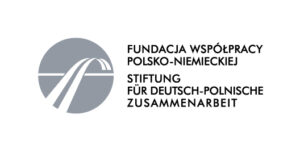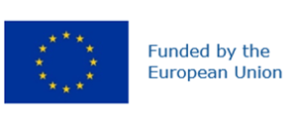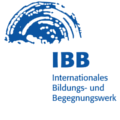
The “Remembrance inclusive / Erinnern – inklusiv” project concluded with urgent appeals for the inclusive opening of memorials and places of remembrance in two online meetings on Thursday, March 21, 2024, from 11 a.m. and 5 p.m.: “It’s not just about people with visible disabilities,” said Linus Bade, one of the youngest speakers and an inclusion activist himself. “It’s about many more people, because around one in ten people in Germany is severely disabled.” Bade emphasized that visits to memorial sites commemorating the Nazi era should be accessible to all, including those who have visual, auditory, or mobility impairments. He posed a critical question:
“Who has the authority to determine who can visit a memorial and who cannot?”
Over the past 15 months, the workshop teams have been analyzing how the services offered by a memorial site could be expanded to achieve an inclusive opening, using the former Stutthof concentration camp as an example, and have developed initial prototypes. These prototypes were the focal point of the presentations at the final meeting. The prototypes are…
- An inclusive guide for an inclusive visitor service
- two videos in German and Polish sign language
- four text panels written in simple language in both German and Polish
- a tactile tour designed specifically for the blind.
Each workshop was co-led by two individuals, one with disabilities and one without, who shared their experiences during the two final presentations. “It was a lot of work, and collaboration was crucial,” summarized Hannah Kiesbye, workshop leader with Down syndrome, who recorded the German audio files. “I thoroughly enjoyed the process.”
Kaja Lorenc, who has been gradually losing her sight since birth, participated in all three inclusive memorial tours and spearheaded the initiation and development of the tactile tour with the team. “I simply want to be able to engage with the world – but as far as I know, there are no specific guidelines on how to enhance visits to memorial sites for blind individuals in Poland,” she expressed. Alongside the tactile tour, a comprehensive list of 20 points was compiled, which could also be implemented at other memorial sites. Kaja’s tandem partner, a guide fluent in German from the Stutthof Museum, left no room for doubt: “Realizing what was lacking for blind individuals was a profound experience for me! This encounter opened my eyes and ears! We unquestionably need more training in this regard.”
Annika Hirsekorn from project partner Schwarzberg e.V. Berlin highlighted, “there were numerous significant obstacles in the museum and also within the project itself. Inclusive projects absolutely necessitate inclusive collaboration, meaning working together with those affected, and this inevitably requires both time and financial resources for translations and support.” Inclusive cooperation holds paramount importance. “Primarily, there’s a lack of understanding about the diverse deaf community,” observed Marc Zaurov, a deaf historian who contributed to the “Remembering – Inclusive/Erinnern – inklusiv” project in June with a lecture on the history of deaf individuals during the Nazi era. He emphasized the need to alter the hearing people’s perception of the deaf community. Claudia Kermer added that videos in sign language should always be interpreted by native speakers.
“We have also learned a great deal for the planning of our new exhibition at the Museum Stutthof,” stated Ewa Malinowska, Head of the Education Department at the museum. While it’s true that barrier-free design for memorial sites is already mandatory in Poland, it was the exchange within the German-Polish project that made barriers such as language commonly used in exhibitions or the challenges faced by deaf or blind visitors in the exhibition or on the grounds clearer.
Interpreters for sign language and spoken language ensured effective communication among the approximately 60 participants from Germany and Poland during the two meetings.
“This project has allowed us to break down barriers and has brought us all closer together,” summarized Constanze Stoll, project coordinator at IBB gGmbH Dortmund. “It has demonstrated that inclusion is an ongoing process. Inclusion benefits everyone, and it can begin at any time, in any place.” Participants in the two online meetings expressed gratitude for the enriching experiences and voiced hope that the prototypes would be replicated and that the “Remembrance inclusive / Erinnern-inklusiv” project could continue in some form or another.
The German-Polish partnership project “Remembrance inclusive” is organised by IBB gGmbH in Dortmund together with the Stutthof Museum in Poland and the Schwarzenberg e.V. association in Berlin. The project is funded as part of the EU programme “Citizens, Equality, Rights and Values”.
Funded by the European Union. Views and opinions expressed are however those of the author(s) only and do not necessarily reflect those of the European Union or Education and Culture Executive Agency (EACEA). Neither the European Union nor the granting authority can be held responsible for them.





